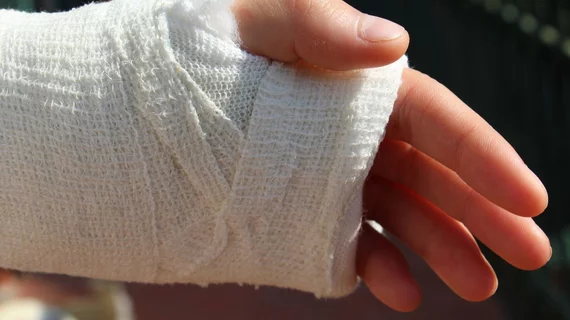Is ultra low-dose CT a feasible option for identifying fractures?
Although ultra-low-dose CT scans offer significant reductions in radiation exposure, there is concern that opting for a lower dose might sacrifice image quality, causing readers to miss important findings.
In orthopedic settings, specifically, providers may overlook nondisplaced fractures using lower doses; standard CT is often used instead and is considered the gold standard. With this in mind, experts recently compared the diagnostic efficacy of both ultra low-dose and standard-dose CT to rule out nondisplaced fractures of the shoulder, knee, ankle and wrist.
The results were published recently in Insights into Imaging [1].
“Although low-dose (LD-CT) and ultra low-dose CT (ULD-CT) (effective dose [ED] 0.53–900 μSv) have been used to diagnose selected limb fractures, reports on the use of ULD-CT for the diagnosis of nondisplaced limb fractures are scarce,” corresponding author of the new paper Jingzhi Ye, with the Guangdong Provincial Hospital of Traditional Chinese Medicine in China, and colleagues explained.
For the study, the team analyzed SD-CT and ULD-CT scans of 92 patients who were undergoing treatment for limb fractures. This included 43 nondisplaced fractures.
After analyzing the two sets of scans, experts noted a significant reduction in patients’ radiation dose, but it was accompanied by a parallel reduction in both subjective and objective image quality. Four fractures were missed by ULD-CT, compared to two misses using SD-CT scans.
Despite this, the overall sensitivity, specificity, positive predictive value, negative predictive value and diagnostic accuracy were very similar between the two scans, prompting the group to suggest that ULD-CT presents a feasible option for identifying fractures that are difficult to detect.
“These data imply that ULD-CT has utility for the diagnosis of nondisplaced fractures of the shoulder, knee, ankle and wrist, and can support clinical decision-making.”
The study abstract is available here.

